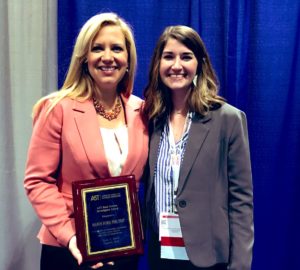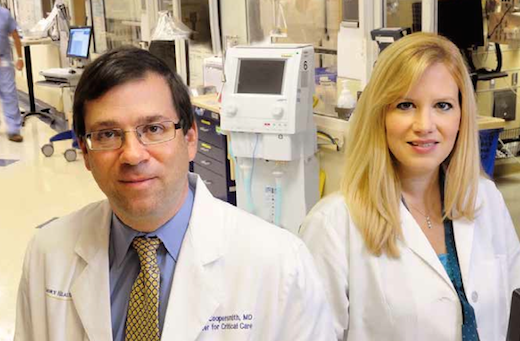Emory transplant researchers have identified a control mechanism the immune system uses to tamp down chronic inflammation. The findings provide insight into how some people were able to stop taking immunosuppressive drugs after kidney transplant.
In addition, they may be important for a full understanding of how many drugs for cancer and autoimmune disorders (therapeutic antibodies) work. The results were published on January 14 in Immunity.
In a twist, scientists have known about the molecules involved for a long time. They’re Fc receptors. Usually, we can think of them acting like oven mitts that immune cells use to grab onto antibodies. Fc receptors bind the constant (unvarying) portions of antibodies, which are the same no matter what they’re directed against.

Mandy Ford, PhD and graduate student Anna Morris
The news here is that an inhibitory variety of Fc receptor – FcγRIIB — is found on CD8+ T cells, and is a way of squeezing off T cell activity. Dogma over the past few decades held that T cells do not express Fc receptors, although evidence for them doing so went back to the 1970s.
“Our data suggest that the physiologic relevance of this pathway is to allow for control of active, highly differentiated effector T cells in the setting of chronic inflammation in order to limit immune pathology,” says senior author Mandy Ford, PhD, scientific director of Emory Transplant Center.
The co-first authors of the paper are IMP graduate student Anna Morris and surgical resident Clara Farley. They and their colleagues probed the functions of FcγRIIB on T cells in mice, and also found that increased expression of FcγRIIB correlated with freedom from rejection following withdrawal from immunosuppression in a clinical trial of kidney transplant recipients. This data came from the CTOT09 study from the Clinical Trials in Organ Transplantation Consortium. Read more





